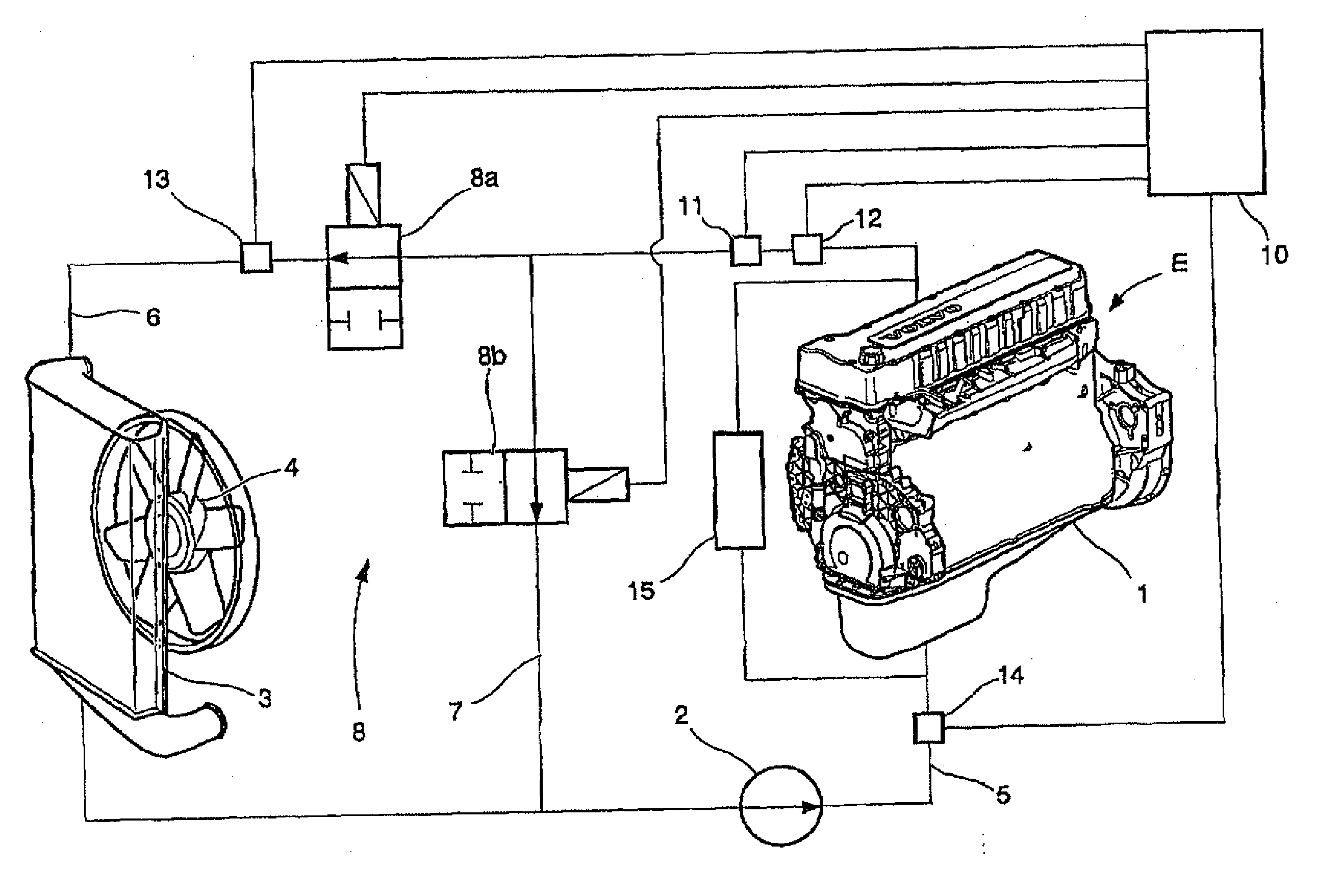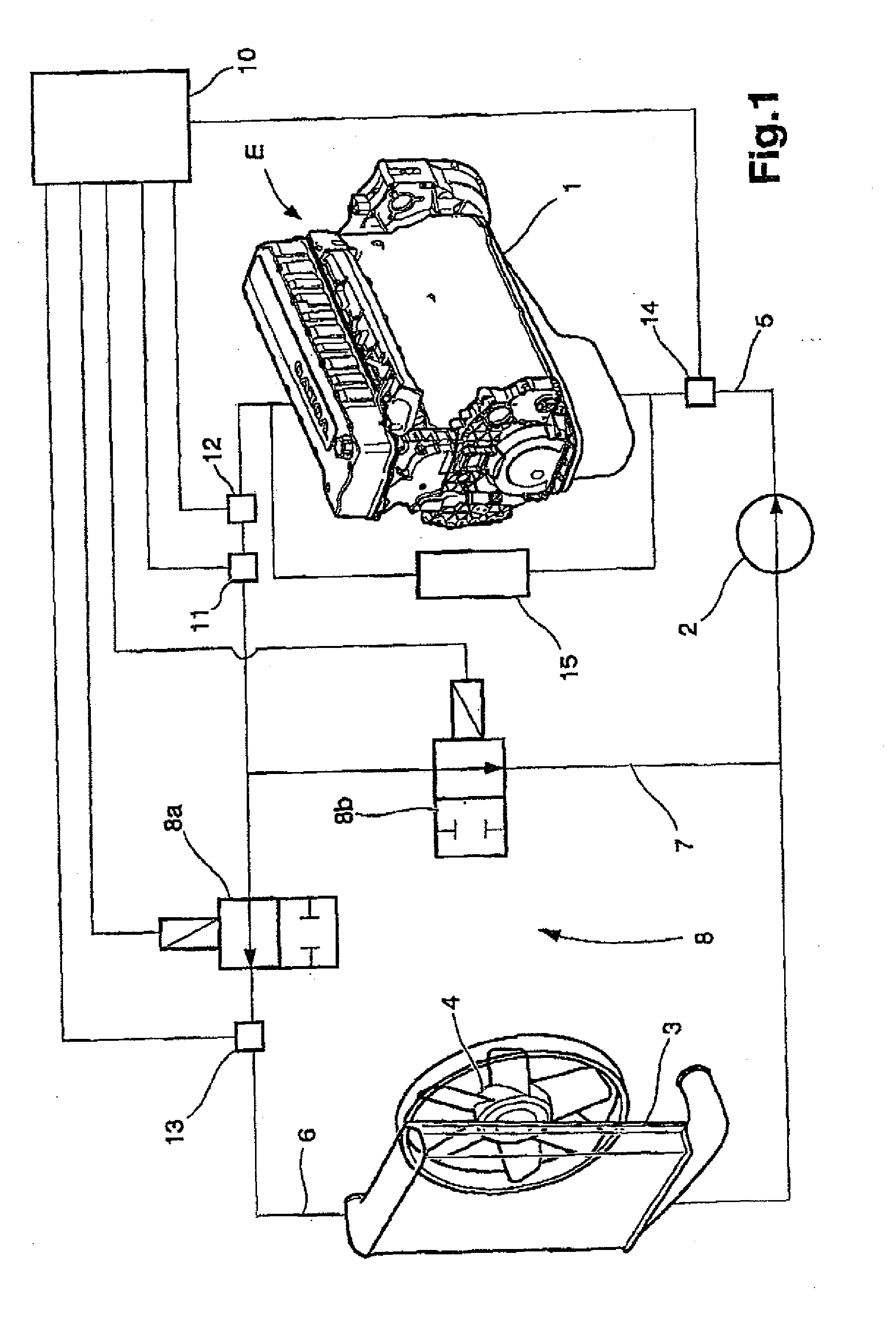Engine cooling system
a cooling system and engine technology, applied in the direction of engine cooling apparatus, control devices of cooling apparatus, machines/engines, etc., can solve the problems of large pressure drop across the radiator than the current design can withstand, internal erosion inside the radiator core, and give a very slight increase in heat rejection, so as to increase the cooling capacity of the cooling system, high engine speed, and high coolant flow
- Summary
- Abstract
- Description
- Claims
- Application Information
AI Technical Summary
Benefits of technology
Problems solved by technology
Method used
Image
Examples
Embodiment Construction
[0023]FIG. 1 describes an engine cooling system comprising a coolant circuit extending through an engine block 1 of an engine E, wherein a coolant such as water flows through the coolant circuit. A centrifugal pump 2 is provided for circulating coolant under pressure through the coolant circuit and a radiator 3 is provided for cooling coolant passing through the coolant circuit. A driven fan 4 is mounted adjacent the radiator 3 to control the flow of ambient air through the radiator. The coolant circuit further comprises a first section 5 comprising the engine block 1 and the pump 2 and a second section 6 comprising the radiator 3. The coolant circuit further comprises a by-pass conduit 7, wherein the by-pass conduit 4 allows coolant to by-pass the radiator 3.
[0024]A flow control valve means 8 is arranged for regulating the flow rate of coolant flowing through the radiator 3 and the by-pass conduit 7, respectively. The flow control valve means 8 comprises a first controllable valve ...
PUM
 Login to View More
Login to View More Abstract
Description
Claims
Application Information
 Login to View More
Login to View More - R&D
- Intellectual Property
- Life Sciences
- Materials
- Tech Scout
- Unparalleled Data Quality
- Higher Quality Content
- 60% Fewer Hallucinations
Browse by: Latest US Patents, China's latest patents, Technical Efficacy Thesaurus, Application Domain, Technology Topic, Popular Technical Reports.
© 2025 PatSnap. All rights reserved.Legal|Privacy policy|Modern Slavery Act Transparency Statement|Sitemap|About US| Contact US: help@patsnap.com



